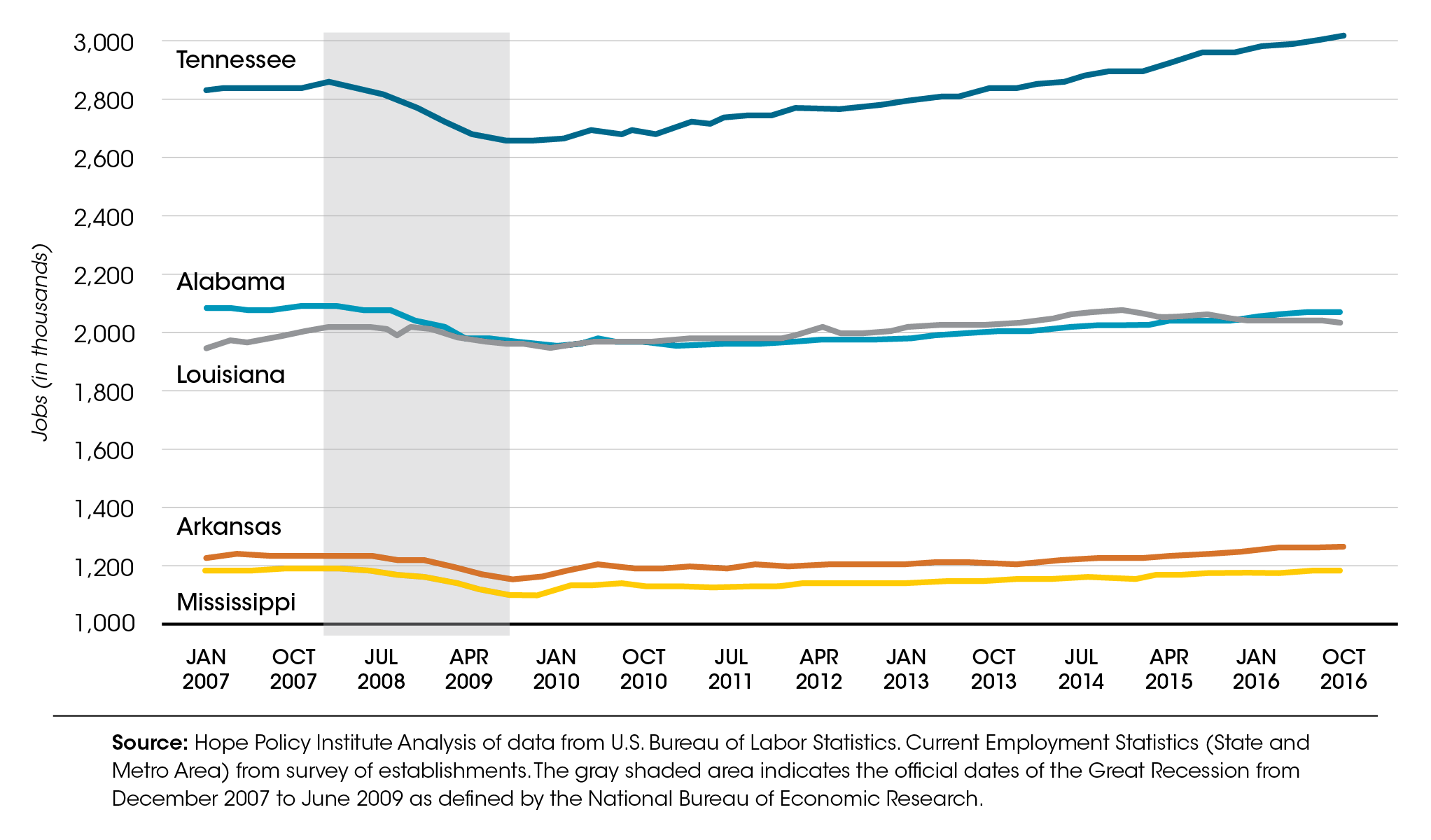Deep South Job Losses due to COVID-19 likely to Far Eclipse those of the Great Recession
April 21st, 2020
As unemployment claims due to COVID-19 continue to climb, the picture of the economic impact of the current crisis becomes clearer. With the new unemloyment claims released April 16, the total initial unemployment claims since March 15 in Deep South States has climbed to 1.2 million in only 4 weeks. To put this number into perspective, during the Great Recession Deep South States lost a total of 577,100 jobs over a period of about two years.
Initial unemployment claims do not directly compare to total establishment employment numbers, but they can be an early indication of the direction and magnitude of changes (job losses) that will become apparent as employment numbers for March and April 2020 become available.
Table 1: Four week unemployment claims climb to more than double jobs lost due to the Great Recession in Deep South States
The magnitude of job losses due to COVID-19 are being seen throughout the United States; however, they are particularly concerning in Deep South States due to already poor economic conditions. As of February 2020, Mississippi and Louisiana were in the top three states for unemployment.[1] For 2019, Mississippi, Arkansas, and Alabama were in the bottom five among states for real GDP per capita and among the bottom six states for personal income per capita.[2] This means that people and communities are less likely to have things they need to stay safe during this crisis, such as access to health care or a cushion of savings to withstand a drop in income. This also very likely means that the region will take longer to recover from COVID-19’s economic fallout. Recovery from the Great Recession is informative here. After the Great Recession, some Deep South states took much longer to recover than the United States as a whole. In fact, in Mississippi, total employment did not recover to pre-recession levels until October of 2019. For other Deep South States it ranged from February 2013 in Louisiana and April 2014 in Tennessee to May 2015 in Arkansas and March 2018 in Alabama. In contrast, total US employment recovered to pre-recession levels in May of 2014.
Nonfarm Employment by State 2007-2016
So far, federal stimulus supports have rightly focused on immediate needs; however, even those short-term recovery efforts are falling too short. For example, the Payroll Protection Program designed to help small businesses keep their employees ran out of funding after only two weeks, and bypassed the small businesses most in need. Full recovery will require long-term supports for families, small businesses, and state and local governments, as well as policy changes that address the underlying inequities that limit economic growth in Deep South States in both recession and recovery.
[1] U.S. Bureau of Labor Statistics https://www.bls.gov/web/laus/laumstrk.htm [2] U.S. Bureau of Economic Analysis https://apps.bea.gov/iTable/index_regional.cfm








